What Is the Temperment Difference Between a Blue Merle and a Tricolored Collie
Nearly everyone associated Border Collies with the typical black and white coloring most commonly seen in the breed. Many also know that these dogs occasionally come in red and white and in merle patterns. But have you ever heard of the really rare Border Collie colors – such as slate, lilac, blue or brindle?
Let's look at the rarest Border Collie colors around – if you have one of these dogs, you are guaranteed to stand out!
Table of Contents
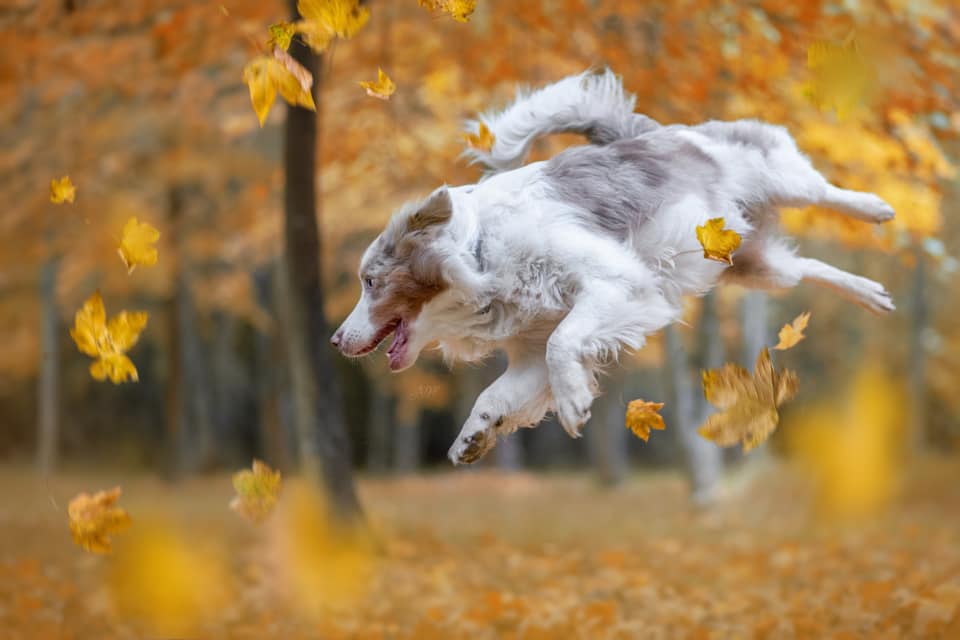
What is a rare Border Collie color?
Generally, any color outside of the traditional black/white and red/white can be classified as a rare Border Collie color.
The vast majority of all Border Collies is black/white. On the one hand this goes back to their origins as farm dogs. Black and white became the classic Border Collie look, and many farmers and owners only want a Border Collie in these colors.
Red and white has become more prominent in the last decade. Red is a recessive gene. That means that both parents have to carry a copy in order for the offspring to be red. Genetically speaking, red is less successful than black that way – if red and black Border Collies were bred with no consideration of color, there would always be more black than red dogs.
As you will see, black and red still are the genetic basis of the rare Border Collie colors as well.
Dilute Border Collie colors
Dilute colors are caused by a specific recessive gene that lightens the pigmentation of a Border Collie's base coat color. It can be found in other dog breeds as well, such as the Weimaraner (both the long-haired and the short-haired Weimaraner are expensive dog breeds for this reason).
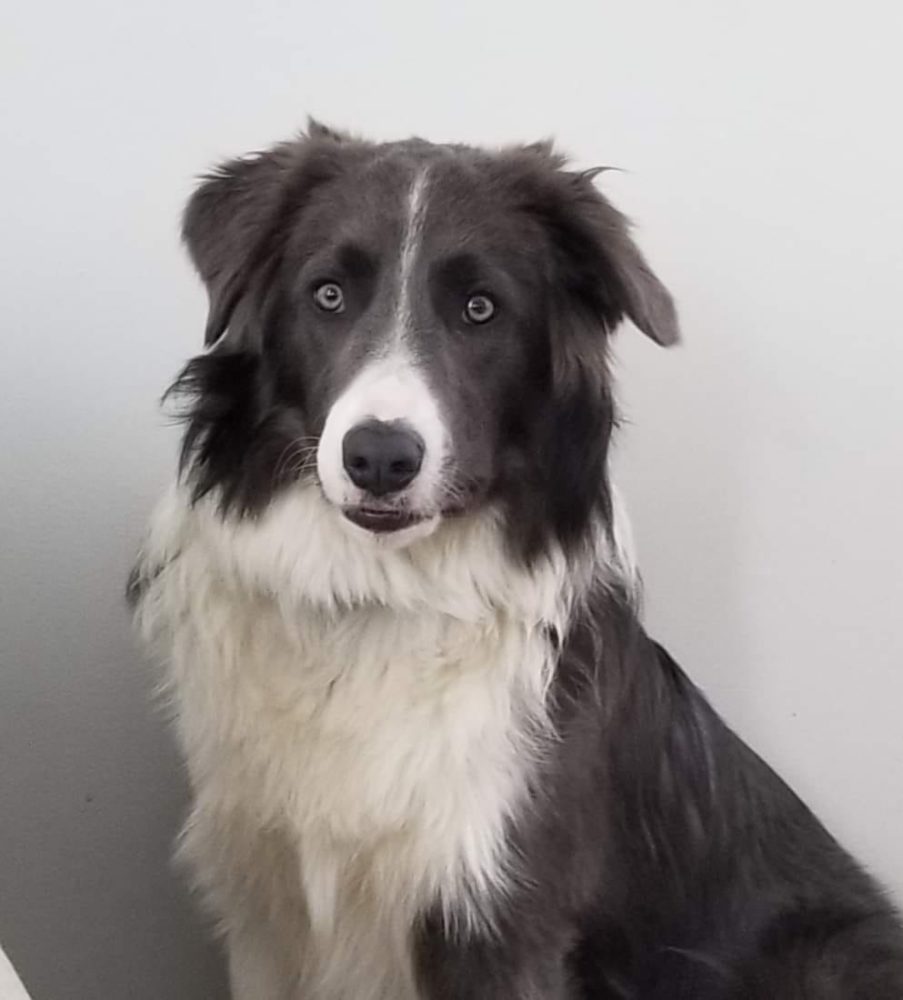
Blue
Blue is a diluted black that makes the dog appear grey. Genetically, these dogs are black and have the dilute gene that lightens the coat. Blue Border Collies are born in a light grey color that darkens as they age. Their nose is typically dark grey, and their eyes are most commonly green, brown or grey like their coat.
Blue Border Collies can come in different shades – from a lighter grey to a grey so dark it nearly looks black. Some blue Border Collies are so dark that you have to see them in the sunlight to truly tell their color.
This beautiful blue dog is owned and loved by Angelique Giles.
Slate merle
The Blue coloring can go along with the merle gene, which causes parts of the coat to be randomly lighter than others. Because the term "blue merle" is already reserved for black and white dogs with the merle gene, the combination of blue base color and merle was named slate.
Slate merles can be difficult to distinguish from blue merles with a lot of white – they might both appear to be light-grey, spotted dogs.
The color of the nose will let you know which one the dog is: in blue merles the nose is black, in slate merles it is grey.
The beautiful slate merle seen here was bred by Hullabaloo Border Collies. If you look closely, you can see that this beauty has two colors in his left eye. This is fairly common in merle-patterned dogs: The merle gene can also affect the iris and lead to stunningly patterned eyes.
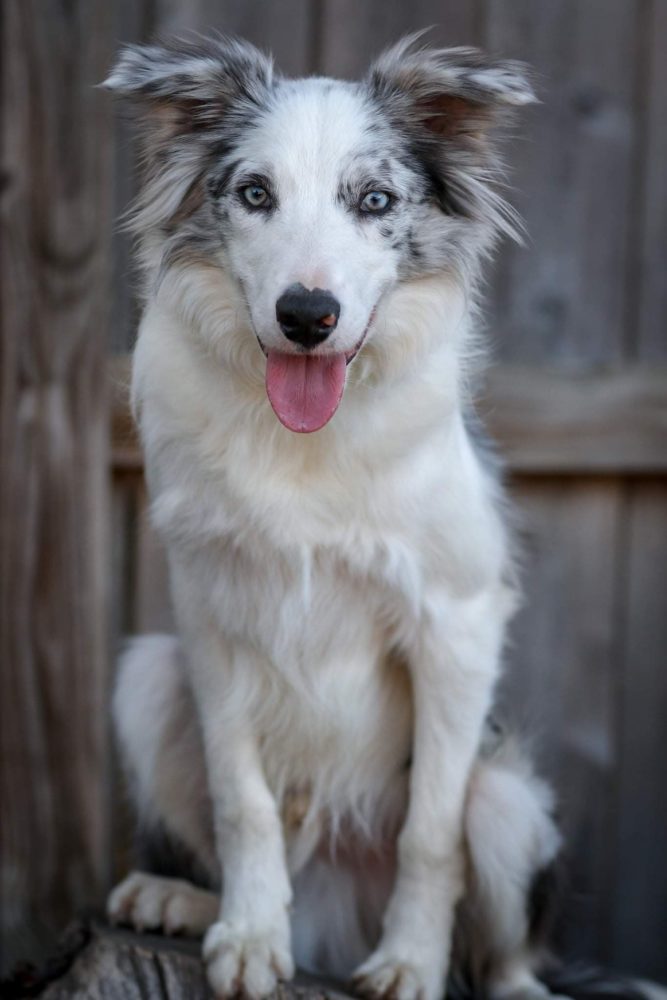
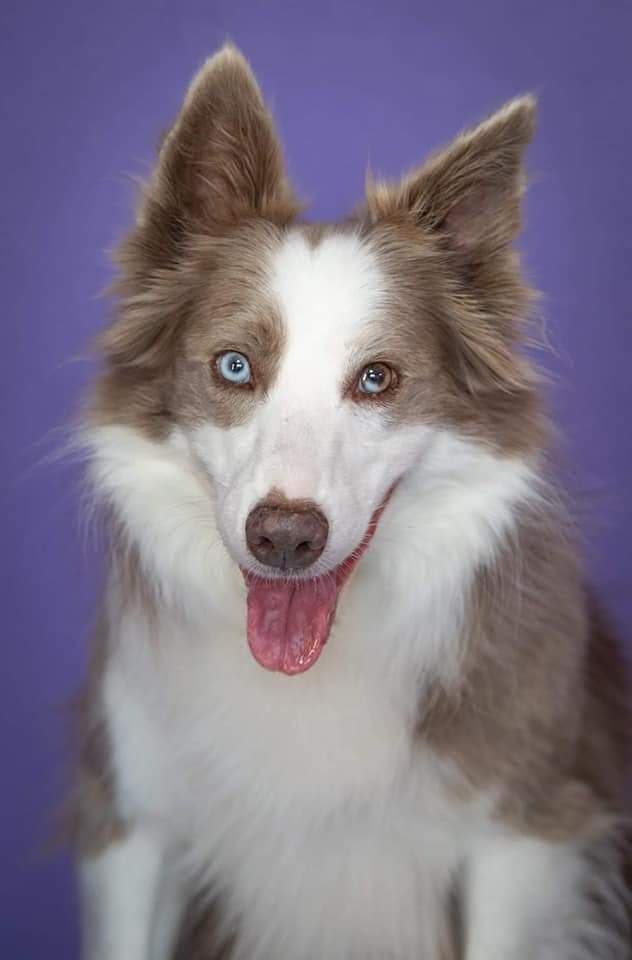
Lilac
Lilac Border Collies are red Border Collies with the dilute gene expressed. They appear to be a faded red color which can look somewhat purple in the sunshine – thus the name "lilac".
This color is prevalent in other breeds as well, where it has different names:
- "Fawn" in Kelpies
- "Isabella" in Dobermans
- "Silver" in Weimaraners
Lilac Border Collies look distinctly different from blue Border Collies in the sunlight, through they might be confused in low light. Their noses and eye rims are red. This color is even more rare than the blue color, because a dog requires two copies of the recessive red color and two copies of the recessive dilute gene in order to appear lilac.
The beautiful lilac seen in this picture is a performance dog from Hullabaloo Border Collies.
Lilac Merle
Lilac can also occur in combination with the merle pattern. This beauty leaping for joy belongs to Amelie Kerst (@thecorderbollies).
You see that this dog's cheeks have a different color than the rest of the body. This is because they are tan points. Tan points (described in detail below) are recessive – a dog needs two copies of the gene to express them. This makes this stunning pup extra rare: a rare color, rare pattern and unusual tan points!

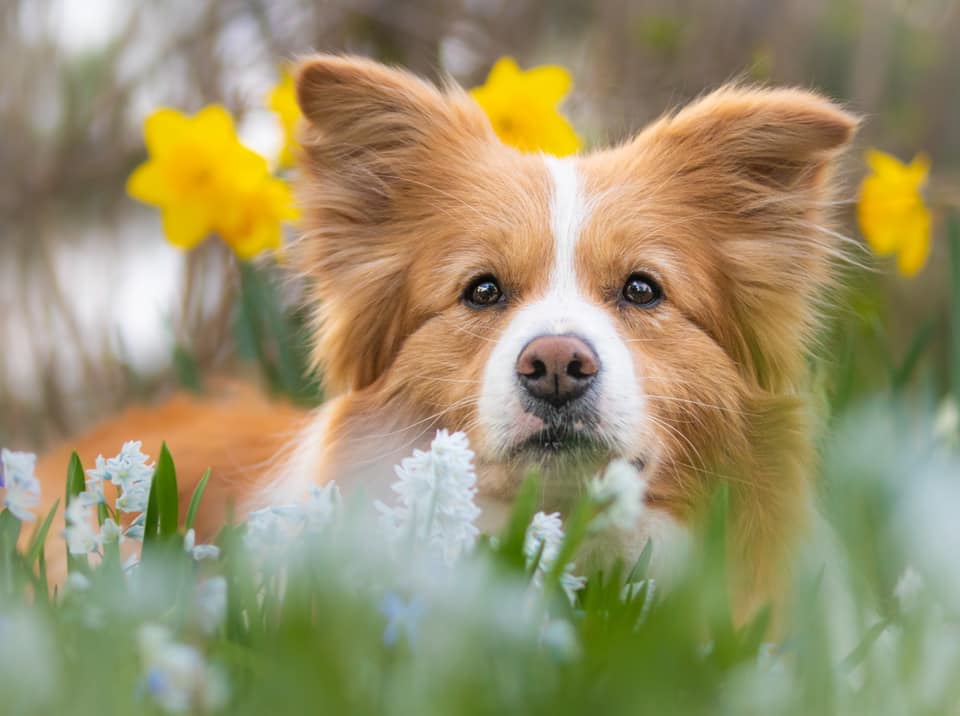
Gold/ee Red
Gold Border Collies have the color most commonly associated with Golden Retrievers. It is also known as Australian Red or ee Red. This is another rare and recessive Border Collie color.
The shade of these dogs can range from a very light cream to a rich, dark golden color. The nose of an ee red dog is medium to dark brown, and their eyes are mostly brown.
The beautiful golden boy Caster belongs to Noelle Deskins from Jacquerie Photography.
A curiosity of ee red is that this color "marks" the merle pattern. A dog can genetically carry an expression of the merle gene, but if his color is ee red, he will not appear merle. This can lead to problems when a gold Border Collie is bred to a merle Border Collie of any color – it risks a possible (though unintentional) merle-to-merle breeding.
It is recommended to always do genetic testing before pairing an ee red Border Collie to a merle Border Collie of any color.
This beautiful pup is an ee red cover blue merle with blue eyes, owned by Megan M Horne.

Rare Border Collie Color Patterns
Patterns influence how the colors are expressed. The most common one is the merle pattern, in which colors are randomly diluted. However, there are many more patterns, some of them extremely rare.

Sable
Sable is a pattern that is very prominent in other breeds such as the German Shepherds, but rather rare in Border Collies. Sable dogs have a tan coat with black tips on each hair. This gives them the characteristic brown/black look.
Many paintings from the UK of the 19th century show sable-colored herding dogs. It is suspected that this pattern once was the most common look of the Border Collie, before it was overtaken by black and white. Today, only very few Border Collies are sable, making it a rare pattern.
Sable can go along with different colors. While it is most often seen with black (creating the typical "German Shepherd appearance"), sable can also be found as red sable, blue sable, slate sable etc.
This sable Border Collie enjoying a walk in a field is a black sable from Hullabaloo Border Collies. You can tell that his base color is black by the deep black nose and eye rims.
Sable puppies are often born with a lighter coat color and the tips of the hairs become darker as the age. Below you can see a slate sable at different stages in his life. From a young puppy (there it is also well visible that his nose is not black but blue – therefore he carries the dilute gene) over a young adult to a fully grown dog. This pretty boy belong to Hullabaloo Border Collies.
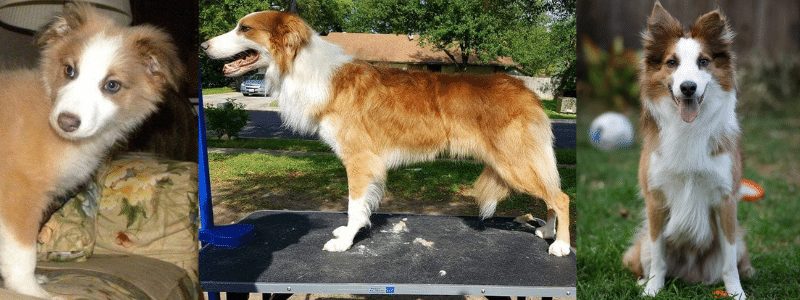
This boy is a very dark sable. He is owned by Connie Lodell. Look how dark he is compared to the sables above!
If you saw him in a low-light setting, you might think that he is a regular black and white or a very dark red and white. Only in good light it is apparent that the brown hairs actually have black tips. Many rare Border Collie colors can be confused with more common colors if we do not look closely!
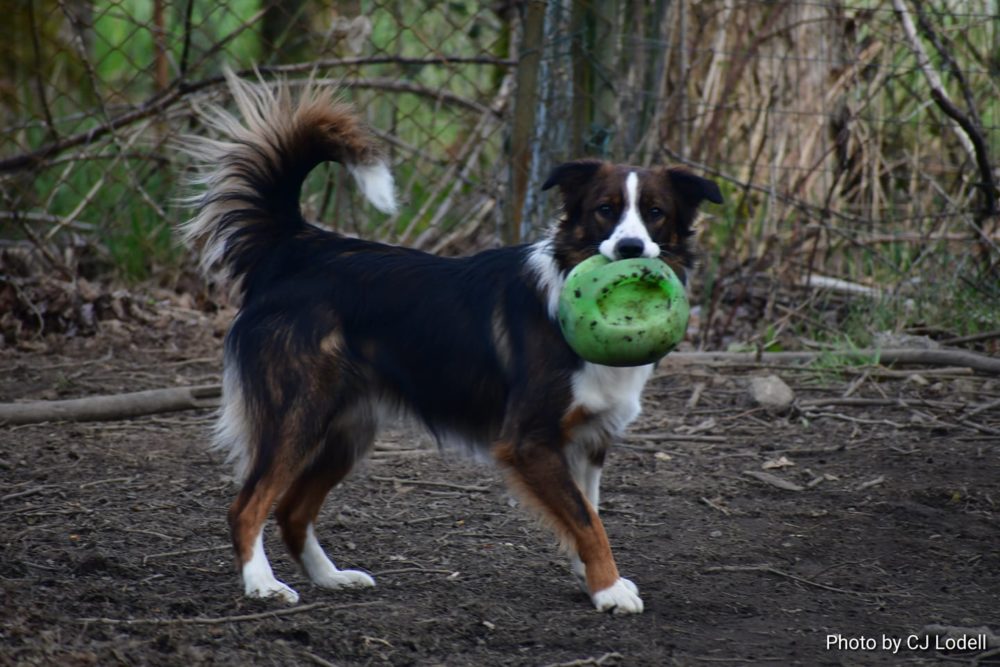

Sable merle
Sable can occur in combination with merle. Here you can see a red-based sable merle. Note how his nose is a rich brown, compared to the black and blue on the other dogs shown. We often have to look at the nose to make an accurate guess what the base color of the dog is – because this dog's coat color actually looks rather similar to the slate-based sable!
This beautiful pup belongs to Courtney Forester.
Seal
Seal is a very unusual color that is often confused with dark red or black. Seal Border Collies have an incomplete expression of the sable gene. The sable gene cannot be expressed completely and creates the appearance of a dark dog with a just barely noticeable tan or "faded" areas. Seal Border Collies can be very dark – nearly black – or as light as a chocolate brown.
The differently colored tips of the hairs are most commonly seen on shoulders, sides and sometimes towards the hind end of the dog.
Seal is arare in Border Collies, but a common color in other breeds of dogs and even other species. Boston Terriers or Italian Greyhounds can be seal. In cats, seal is for example seen in Siamese cats.
This stunning seal is from Hullabaloo Border Collies. He is the great grandson of the brindle dog seen below, and the grandson of the slate sable shown above.

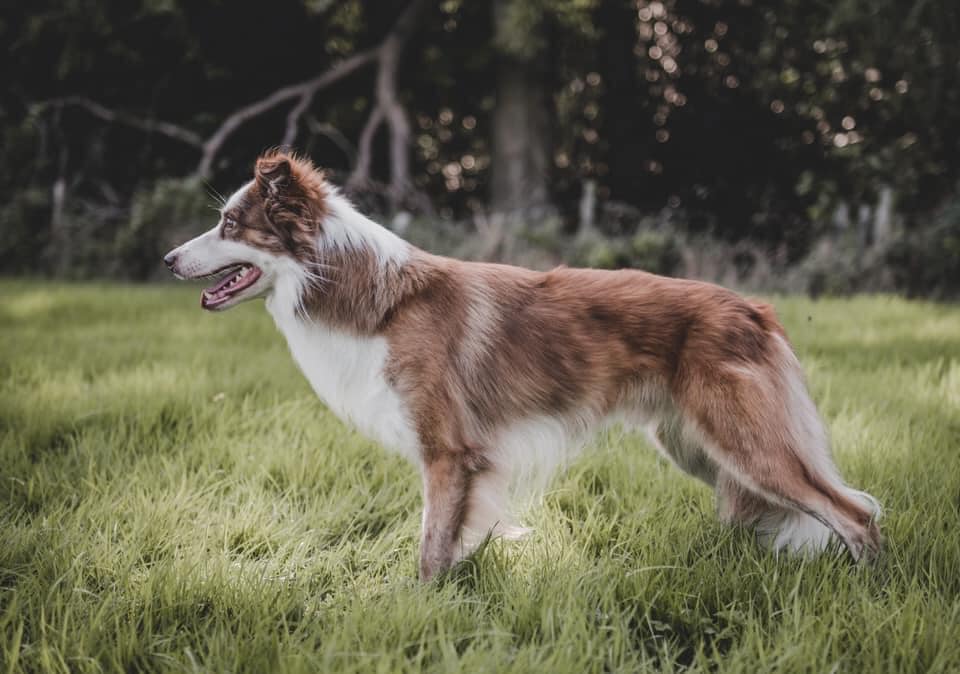
Brindle
Brindle is another pattern that is seen commonly in other breeds, but is very rare in Border Collies. In this pattern, the dog usually has brown as a base color, with black "tiger stripes" on top. In Pitbulls, Mastiffs or Boxers brindle is seen often.
Red brindle
The brindle pattern can occur in base colors other than black as well. Here is a red brindle Border Collie – an extremely rare and difficult to find color!
The stunning red boy on the lush meadow is owned by Heidi Clelland from Ivormyth Border Collies. He is fully KC-registered (the UK equivalent of the AKC).
Piebald
Piebald Border Collies show large white patches across their body. Piebald can go along with any other color or pattern – there are black and white piebalds, blue merle piebalds, red piebalds etc.
As with any coloring that features extensive amounts of white, hearing problems can be a concern. The white should not cover the ears of the dog. If your dog's ears and head are completely white, have his hearing checked – it might be that he is deaf.
Piebald is a very rare pattern in Border Collies. In other breeds and domesticated animals it is seen more commonly. Beagles are a typical piebald dog breed. Horses and cattle also are often piebald.
This extremely unusual pup belongs to Sophie Jasmer and is a dilute red tri, piebald merle (say that three times fast!).
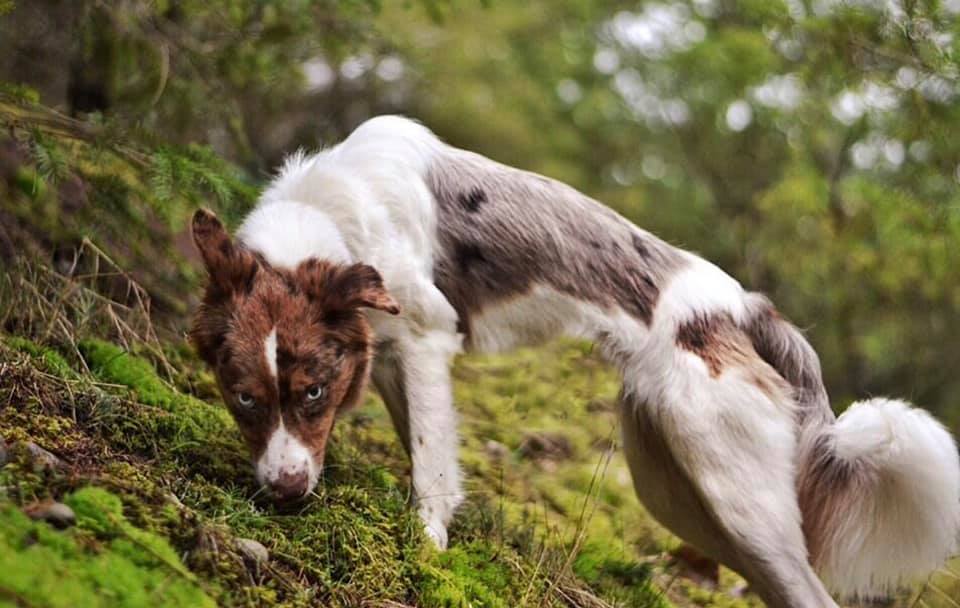
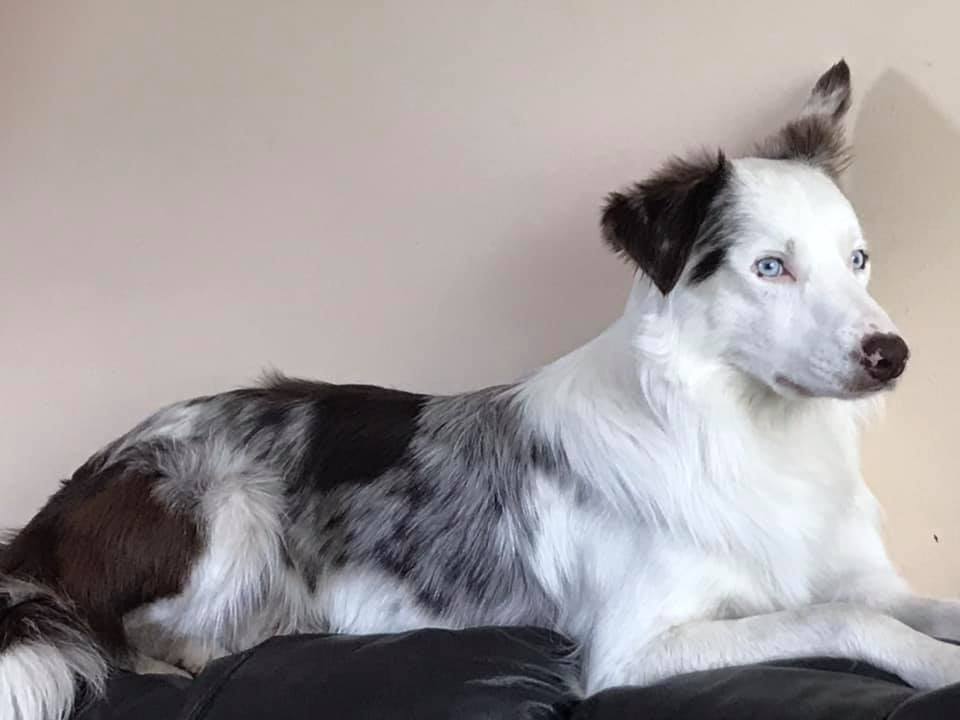
Here is another red merle piebald Border Collie – this stunning pup is owned by Julia Barnes. Note the blue eyes – blue eyes more commonly occur when the skin surrounding the eyes is white than if it is colored.
On this dog's nose you can see some pink spots. Some merle-patterned dogs are born with pink noses that fill in slowly as they age. Noses that are partly pink and partly colored are called "butterfly noses".
It is interesting to note that butterfly noses continue to fill in for the duration of the dog's life. Some dogs might only have a fully colored nose by the time they are 10 years or older. Others fill in earlier. Because the pink skin is susceptible to sun burns, owners in hot and sunny climates should consider applying sunscreen to their dog's nose.
Minimal White
The opposite of the Piebald Border Collie is the Border Collie with minimal white. Most Border Collies have what is called "classic", "traditional" or "irish" markings:
- a white blaze
- a white collar
- white feet (sometimes with white legs)
- white tip of the tail
Minimal white Border Collies have no or very little white markings. This is extremely rare and can occur in combination with any other color or pattern (minimal white black, red, blue merle, etc.)
Minimal white is more commonly seen in Australian Shepherds – to find these dogs among Border collies is very rare.
The pretty boy on the right is 2 year old "Bear", owned by April Ford. He has absolutely no white on him!

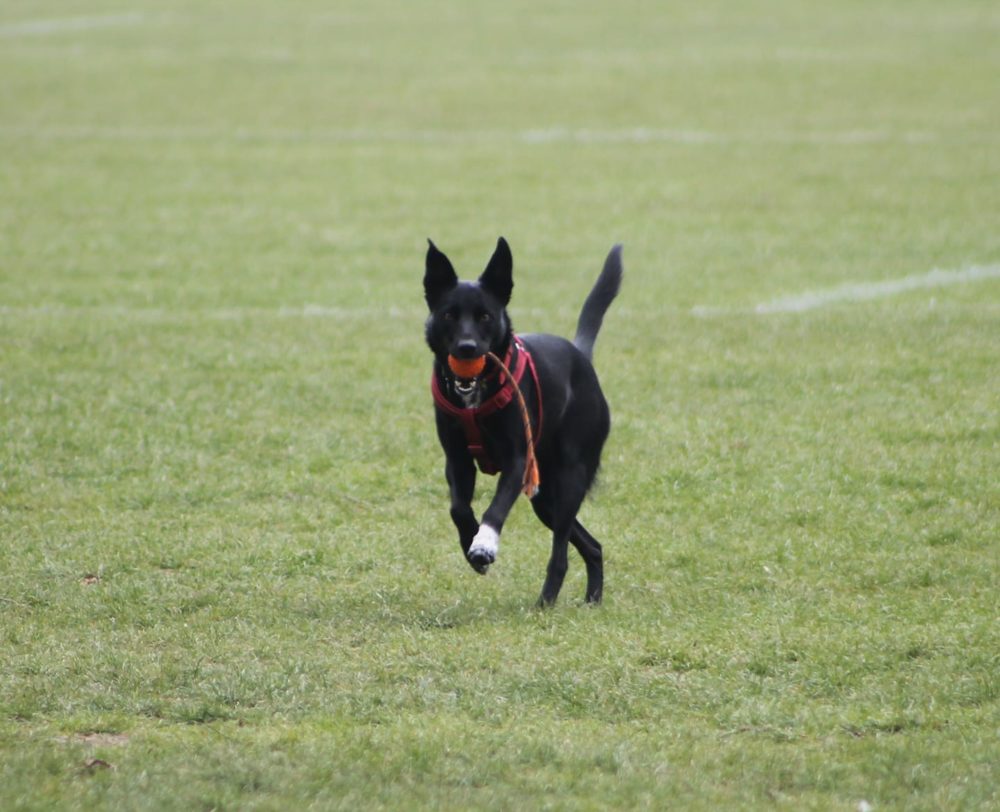
Here is a minimal white Border Collie in Black. Her name is Eos, and she is owned and loved by Jen Rae-Frances. The only white on her is the patch on her chest and the white paw.
If you don't know this is a Border Collie, it would be easy to mistake Eos for a Shepherd cross!
Because such dark dogs are not well-visible at night, owners should only walk them with an LED collar.
Tri colored Border Collies
Tri coloring is a pattern that can occur with any base color. Tri colored dogs have light tan spots on their cheeks, eyebrows and legs. Some breeds only come in tri color, such as the Bernese Mountain Dog or the Doberman.
In Border Collies, tri color is less common. Both parents have to pass on a copy of the tri color gene for it to be expressed in the offspring. The most common tri colored Border Collie is black, tan and white. However, we can also see very rare combinations, such as lilac tri color or slate merle tri color.
The stunning and intense Border Collie seen here is named Blue and owned by Hannah Louise. He is a blue merle tri – genetically this means he is black, has the merle gene and two copies of the tri color gene.
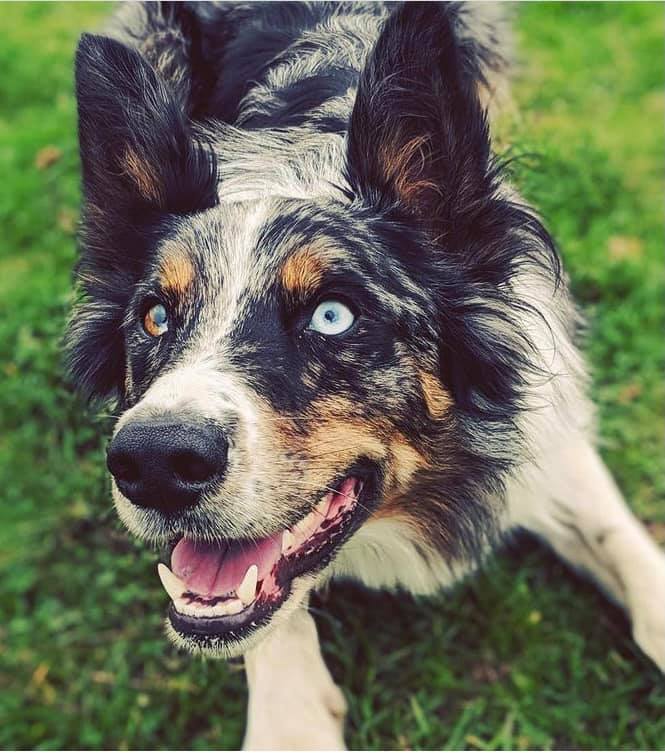
Are tri-colored Border Collies rare?
While tri-colored Border Collies are less common than the traditional bi-colored ones, they are not too rare when paired with black or red. However, when tri goes along with already less prevalent colors and patterns such as blue or lilac, brindle or minimal white, it is very rare!
What is the rarest Border Collie color?
The rarest Border Collie colors are those that combine a rare color with a rare pattern, such as:
- Slate merle with tri
- Red brindle
- Slate sable
- Lilac merle with tri
While it's fun to pick a puppy with a very rare color, you always need to make sure that your future Border Collie's breeder also pays attention to the parents' health and temperament. Unfortunately, some irresponsible breeders try to produce dogs with rare colors to make money off them – without considering other qualities of the pups.
Your future breeder should always pay attention to the parents' behavior, temperament and trainability. In addition, the only dogs who have passed breed-specific health tests should be bred in the first place.
This applies to any breed with rare colors by the way (such as unusual Poodle colors). No dog should be bred for his color alone!
Some breeders charge more for specific rare colors. This is generally frowned upon by responsible AKC breeders, but is a common practice nonetheless. If your Border Collie breeder has a higher price for merle patterns or dilute colors, you should look for a different one.
Source: https://spiritdogtraining.com/breeds/rare-border-collie-colors/
0 Response to "What Is the Temperment Difference Between a Blue Merle and a Tricolored Collie"
Post a Comment